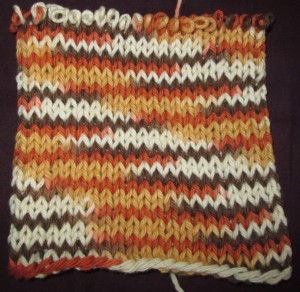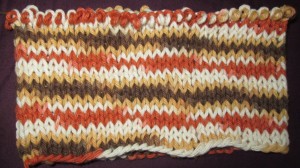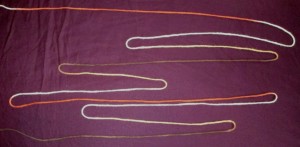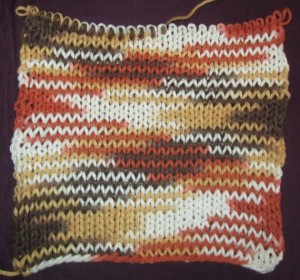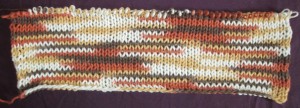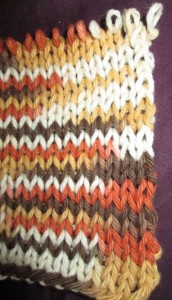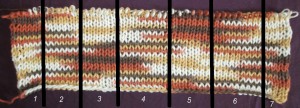In the last post, we saw how working back and forth in rows with variegated yarn will lead to a zigzag pattern. The length of the rows determines how the colors work together in the zigzag pattern. Another trait of variegated yarn worked in rows is the ‘double up effect’, where you get the same color in two consecutive rows at the edge. If your rows are long enough, you will also see the double up effect in the middle of your work.
Working in the round produces a different type of pattern. There is no double up effect and the colors form diagonal stripes that go one way only. They zig, but they don’t zag.
In this example, the orange and tan pair up and the brown and white pair up to form diagonal stripes. Remember the color schema for this yarn: TBBTWOOW. You can see that orange is in the same position with respect to tan as brown is to white.
In the next example, made with longer rows, we get single color diagonal stripes. If you pick a single column and move up, the rows follow the color schema exactly – white, orange, white, tan, brown, tan.
To summarize these two variegated yarn posts:
- Working back and forth in rows produces a zigzag pattern.
- Working in the round produces a diagonal stripe pattern.
- The length of the row/round determines how the zigzag or stripe pattern works. You may need to make a swatch that is the actual length of your project in order to determine if you will like how the variegated yarn works with that project. If you don’t like what you get, you may be able to significantly alter it by lengthening or shortening the rows by a couple of stitches.
- In order to visualize how the colors will come together in the zigzag or stripe pattern, it is useful to identify the color schema.
- Increases or decreases will change the pattern (more on this in a bit).
Next part: different types of variegated yarn…

